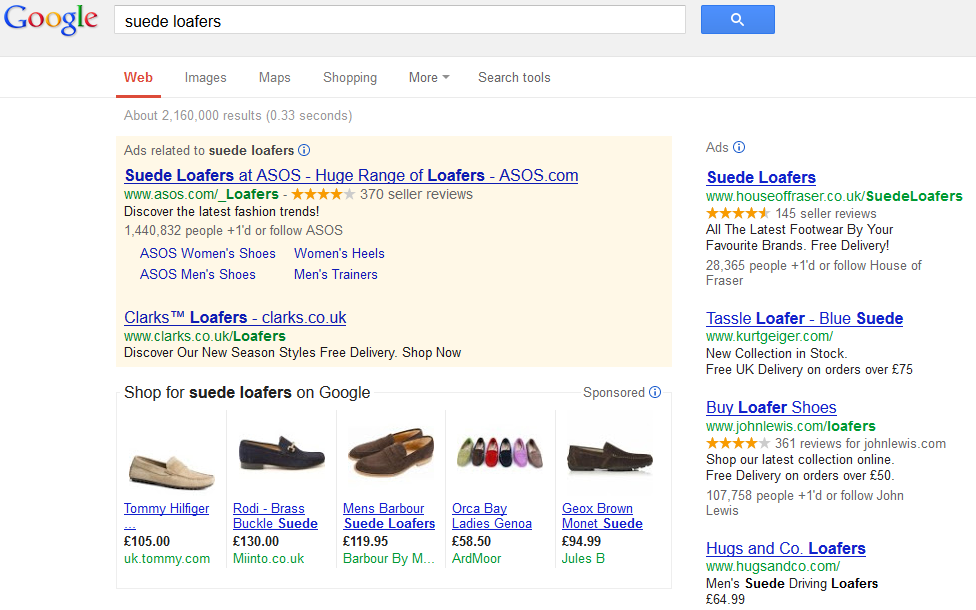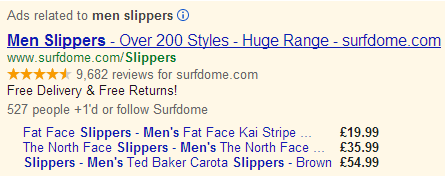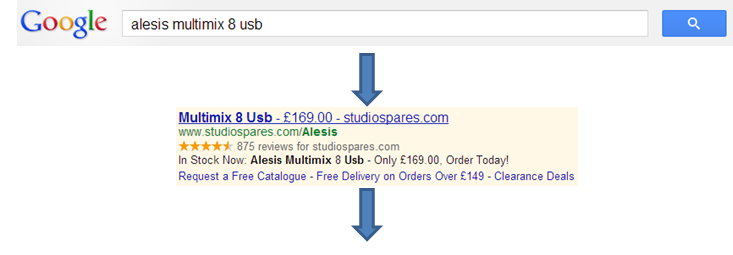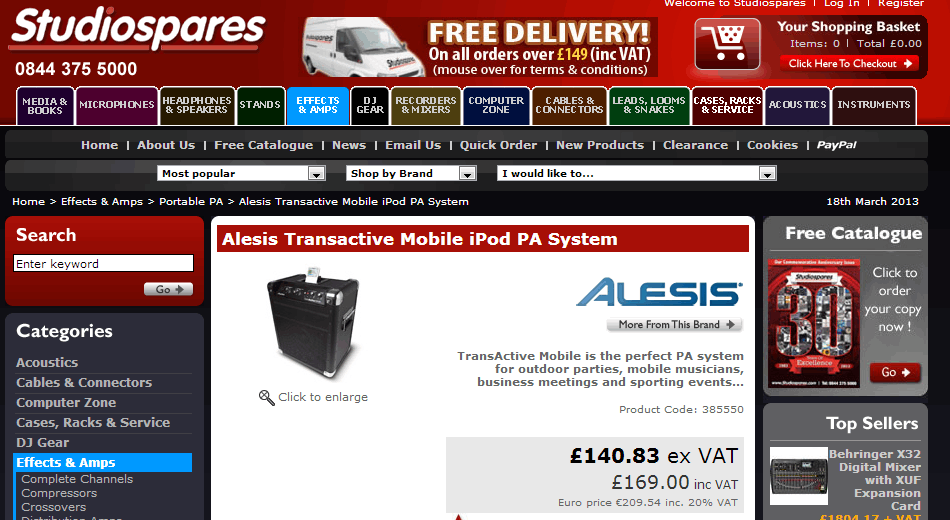 Search Laboratory is attending Internet Retailing Expo 2013 in Birmingham this week and to mark the occasion we’ve put together a five-point PPC guide for retailers.
Search Laboratory is attending Internet Retailing Expo 2013 in Birmingham this week and to mark the occasion we’ve put together a five-point PPC guide for retailers.
Product listing ads and product extensions
Product Listing Ads can have a huge impact on retail PPC performance. Although Google is doing everything it can to convince advertisers to set up PLAs, and click prices are rising, for some industries they are still uncompetitive and can provide a massive increase in traffic and sales.
Even for the most competitive retail sectors PLAs tend to provide high click-through rates and additional traffic. This traffic is also often highly qualified. Many users will already have a good idea of whether this is the product for them through the images and prices PLAs offer.
PLA performance largely depends on a good product feed, and different images and titles should be tested. Performance can also be optimised with a good Adwords structure, allowing for precise bidding, and by preventing your PLA from showing on unwanted searches with negative keywords.

Similarly, Product Extensions offer additional ad space, and the highly qualified traffic that can come as a result of prices and good descriptions.

Product feed campaign generation
Granularity is everything. Creating a campaign from a product feed can allow you to write highly targeted adverts, which include price and product name as well as a good call to action for thousands of products. A well-structured feed can be used to generate an expansive keyword list covering every product in you inventory as well as product types and categories.
Advertising on specific products or part codes, and offering bespoke ads for each of these, will lead to high click-through rates and bring in highly qualified traffic that can offer a much higher level of ROI than would be available through advertising at a category level alone.
Rules can also be set up to ensure out of stock products are paused, products over a certain value are always live or products under a certain value are not advertised on for example. These rules can be used to ensure that only the most profitable products are advertised on, maximising revenue through PPC.
Managing campaigns based on product feeds will either require the help of software or a strong knowledge of Excel (or other spreadsheet software) to allow for automation of the process while still generating extremelyhigh-qualityy ads.


Bidding
Be sure to bid based on actual returns rather than just an across-the-board CPA target. If you sell footwear ranging from £10 flip-flops to £500 snakeskin boots then it would be foolish to value a click for the according keywords the same.
For the most accurate bidding strategy it is important understand the margins and profit made from each product or range of products on the website. This should be estimated for an initial setup and then further-refined based on the data that you get through the website.
Lifetime value
Understanding the lifetime value of a new customer can have a huge impact on the amount you are willing to pay for a click. It may be that you’re willing to actually make a loss on an initial sale if you know they are likely to return to the site for further commerce in the future.
This can be particularly important for products which only last for a limited amount of time, products that people are likely to need several more of in the future or products with a large cross-sell opportunity. Examples of this are:
- Cosmetics – likely to be used up and need replacements.
- Birthday cards – people need to buy them regularly.
- Office equipment – loads of potential cross-sells if providing for a business.
Content of ad texts
Ad texts are your window to the world – you need to ensure that people are finding your ads appealing in order to get the click. With retail, this can be hugely important.
Think about the products you sell and the target audience. If you are selling techy gadgets then try and appeal to the sense of fun that people want to experience from these. If you’re selling beauty products then think about the look that someone will want to achieve by using these. A lot of retail purchases can be based on emotion as well as facts. When you buy clothes, you want to buy something that appeals to your sense of fashion rather than just being the highest quality materials or the cheapest prices. What kind of messages would you need to see to engage your interest and warrant that click?

Other considerations for ads are whether to include prices or not. If you include prices then you can automatically qualify your traffic as buying in to what you have on offer. Therefore you may expect better conversion rates and fewer clicks from people who arent prepared to pay your prices. On the other hand, if I do a search for mens t-shirts then I’m unlikely to care that they start from £5. Im much more interested in finding t-shirts that I actually like and would want to own. Don’t always assume that price is the only factor in someones mind.
IRX 2013
Search Laboratory CEO Ian Harris will be speaking on both days of IRX 2013 at the NEC, Birmingham. On Wednesday, Ian will speak on global expansion and how retailers can attract more international customers online, while on Thursday he will host a workshop next to the eSeller theatre.
Search Laboratory will be exhibiting on stand E53 for the duration of the Expo, opposite the eSeller media.com lounge.
In addition to IRX 2013, Search Laboratory will also be teaming up with Internet Retailing later in the month to host a free webinar, Demystifying Organic Search for Retailers.


